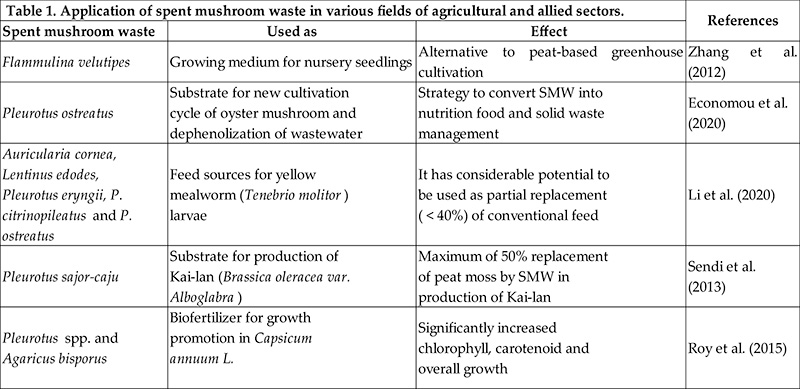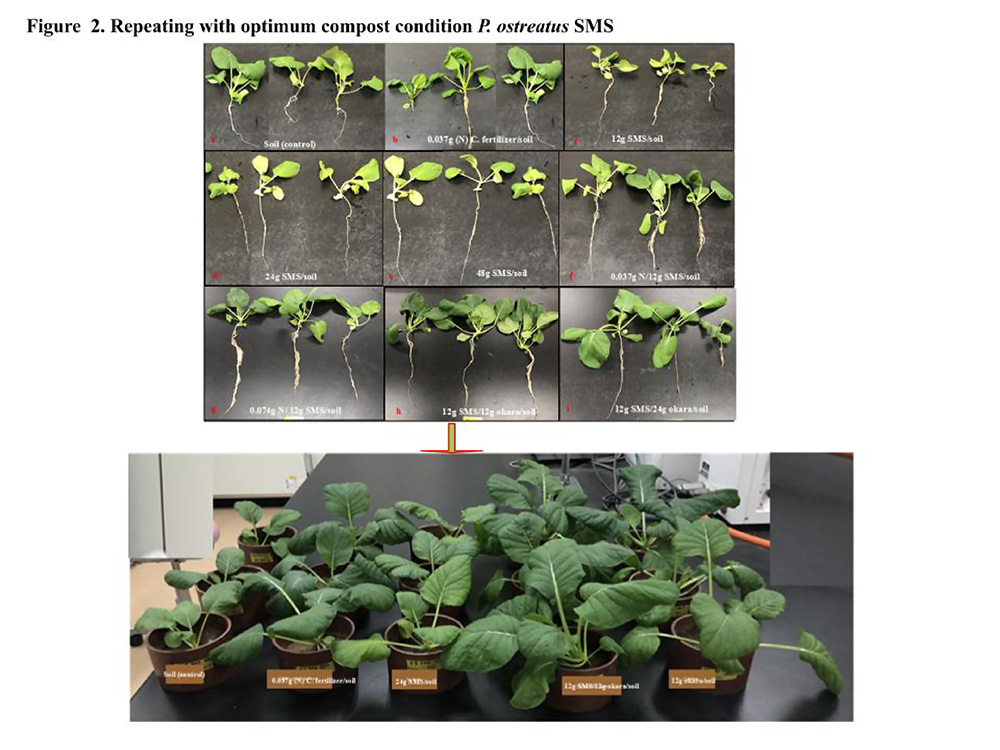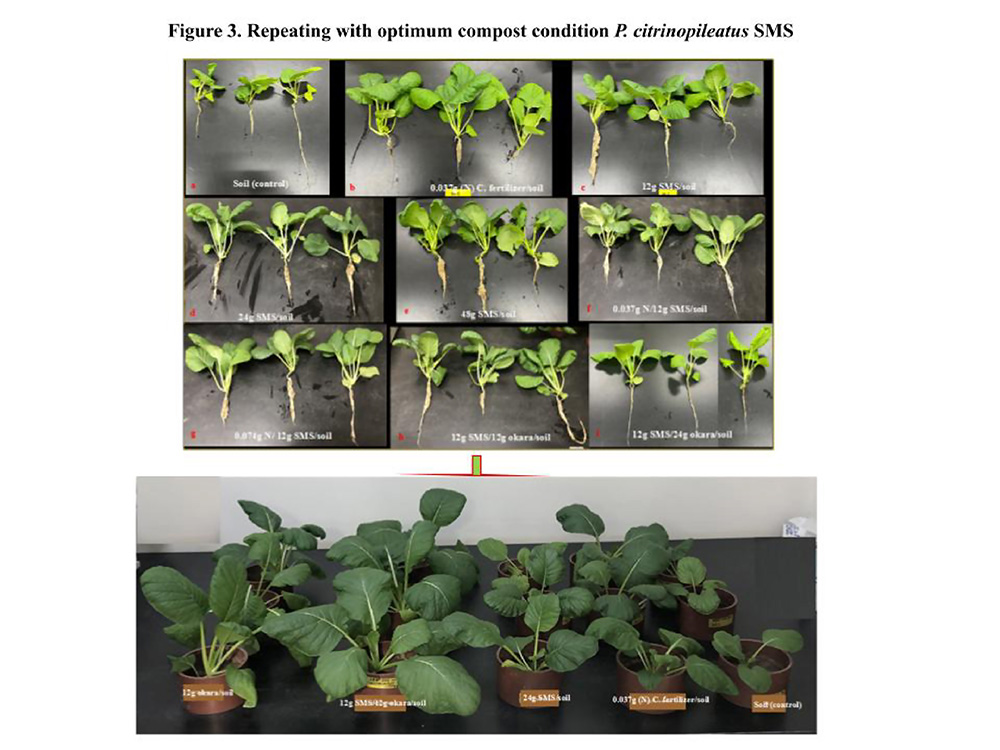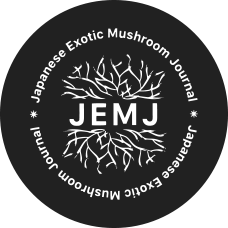Login or Subscribe
You must be logged in to access this content
Subscribe for free access to Japanese Exotic Mushroom Journal and gain insider knowledge on effective cultivation methods for Japanese mushroom species. Elevate your skills with expert tips and innovative technologies to master the art of growing Japanese exotic mushrooms.
◆ Discover exclusive Japanese mushroom cultivation techniques
◆ Learn innovative methods to enhance mushroom quality and yield
◆ Tap into Japan's rich heritage for unique growing insights
◆ Discover exclusive Japanese mushroom cultivation techniques
◆ Learn innovative methods to enhance mushroom quality and yield
◆ Tap into Japan's rich heritage for unique growing insights
Subscribe Now for Free Login
Effects of Spent Mushroom Substrates (SMS) as Bio-fertilizer for Improving Soil Health and Plant Productivity
Babla Shingha Barua (PhD)E-mail: drbsbarua@gmail.comAbstractSpent mushroom substrate (SMS) is abundantly generated by the mushroom industry after harvesting. Despite intensive use in cultivating mushrooms, SMS still retains a significant amount of mineral nutrients, lignocellulolytic enzymes, and proteins, making it a valuable organic resource for both mushroom cultivation and plant nutrition, as well as for improving general soil health. This study aimed to optimize mushroom cultivation using food waste to enhance food waste recycling and to then explore the utilization of SMS as an organic fertilizer. The SMS of Pleurotus citrinopileatus demonstrated higher plant biomass compared to Pleurotus ostreatus when treated with SMS and okara (soybean pulp from tofu production). Therefore, agricultural and food waste can serve as key resources in mushroom cultivation and contribute to a zero-emissions, sustainable economy.Keywords: Spent mushroom substrate (SMS); Microbial diversity; Organic fertilizer; Plant growth; Brassica rapaIntroduction
Recycling agricultural waste offers significant advantages, as it allows waste materials to be repurposed for new production processes, such as mushroom cultivation and the use of spent substrates (SMS). Our previous research demonstrated that mushroom cultivation utilizing agro-food waste as substrates can optimize substrate efficiency. Currently, mushroom cultivation is practiced worldwide, ranging from traditional to highly advanced technological methods. Using agro-food waste as a substrate minimizes environmental pollution in farms and plantations. Furthermore, the mushroom industry produces abundant spent mushroom substrate (SMS) after mushroom harvesting, which still has sufficient mineral nutrients, lignocellulolytic enzymes, and proteins.The agricultural use of SMS is, therefore, not only an excellent organic resource for plant nutrients but also helps maintain soil health. However, in most countries, this SMS is disposed of as waste with negative environmental impacts, because SMS is not suitable for composting by itself due to the presence of lignocellulose. According to estimates, approximately 55 million tons of SMS are generated annually worldwide. It is estimated that 1 kg of fresh mushrooms produces approximately 5 kg of SMS. There has been research that has reported that SMS is an emerging and promising feedstock for a wide range of renewable and sustainable biofuels, including biogas/biohydrogen, bioethanol, bio-oil, solid biofuel, and others (Figure 1).
- We attempted to replace the expensive peat moss with SMS under pot culture cultivation of Brassica oleracea var. alboglabra. SMS and peat moss in the ratio of 1:1 along with NPK and peat moss alone performed equally in terms of yield and quality of B. oleracea crop. The reuse of SMS is a good growing medium for vegetables like cucumber, tomato, broccoli, tulip, cauliflower, pepper, spinach, etc. SMS from oyster mushroom cultivation has a positive effect on the growth of chilis. The other utilities of the SMS are in vermicomposting, bioremediation, and as organic-mineral fertilizer. Another big issue is simultaneous increase in generation of domestic food waste, leftovers and/or trade refuse per capita due to population bulge, affluence and urbanization. These pose disposal problems and are difficult to handle. Despite this article, the SMS of the grown Pleurotus spp., grown using agro-food waste, has not been fully investigated for its agricultural use such as in Brassica rapa (komatsuna) cultivation.
Plant Material and Experimental Setup
One portion of the SMS of P. ostreatus and P. citrinopileatus was used for plant growth. B. rapa (komatsuna) was selected as the plant since it is commonly cultivated in Japan, where the seeds can be obtained commercially. Eight treatments with different combinations of additive materials_emdash_chemical fertilizer (CK), 12g of SMS, 24g of SMS, 48g of SMS, 12g of SMS 10g of urea, 12g of SMS 20g of Urea, 12g of SMS 12g of okara, 12g of SMS 24g of okara_emdash_were used for the experiment using only soil as a control. Here, 300g of air-dried soil with different combinations of SMS and water was mixed well and transferred into Neubauer pots (100 cm2 volume; Fujiwara Seisakusho, Ltd. Tokyo, Japan) and kept at 25°C under dark conditions for two weeks. B. rapa was then grown in the pots for 37 days in a growth chamber at 25°C, with three replicates. B. rapa was then harvested after 37 days and the dry weight of above- and below-ground biomass was determined. The cultivation test was conducted twice; the second time, 24g of SMS and 12g of SMS 12g of okara were selected with good results in the first cultivation test. The drying weight of the plant was measured after harvest even in the second cultivation, and the soil chemical properties and bacterial and fungal biomass were investigated after harvest. 
Results and Discussion
Effects of SMS from P. ostreatus and P. citrinopileatus on B. rapa growth.For the SMS of P. ostreatus, different additive material combinations demonstrated significantly different biomass. The biomass of B. rapa in the chemical fertilizer plot presented a dry weight of 1.52g, but when 12g of Okara was added to SMS, the plant growth was greatly improved and the plant dry weight increased to 2g (Figures 2, 3). In terms of the SMS of P. citrinopileatus, the growth of B. rapa was observed to be the best in the plot where 12g of Okara was added to 12g of SMS. The treatment with the next best growth was found to be the treatment in which urea was added to 12g of SMS (Figure 3).Conclusion
This study attempted to create a zero-emission method to recycle agro-food waste generated from the current agro-food production system through mushroom cultivation. It was found that SMS could be used for farmland without the composting process by using okara as an additive material. The results can adapt to local recycling with food production systems that produce new valuable agricultural products by regenerating local food loss, food waste, and agricultural waste. Therefore, soil health and plant productivity using unused resources would not only lead to a reduction in waste but also increase food production.Acknowledgments
The author would like to thank many researchers for their research article review used as references in this article and the author declares no conflicts of interest. The author is also thankful to be able to carry out his present research via academic experiences as a postdoctoral researcher at the University of Yamanashi.Present affiliation: Researcher & Foreign Division Chief at Fujishukin, Yamanashi..jpg)







 1-2-13 Honmachi, Komoro city, Nagano prefecture, Japan 384-0026
1-2-13 Honmachi, Komoro city, Nagano prefecture, Japan 384-0026